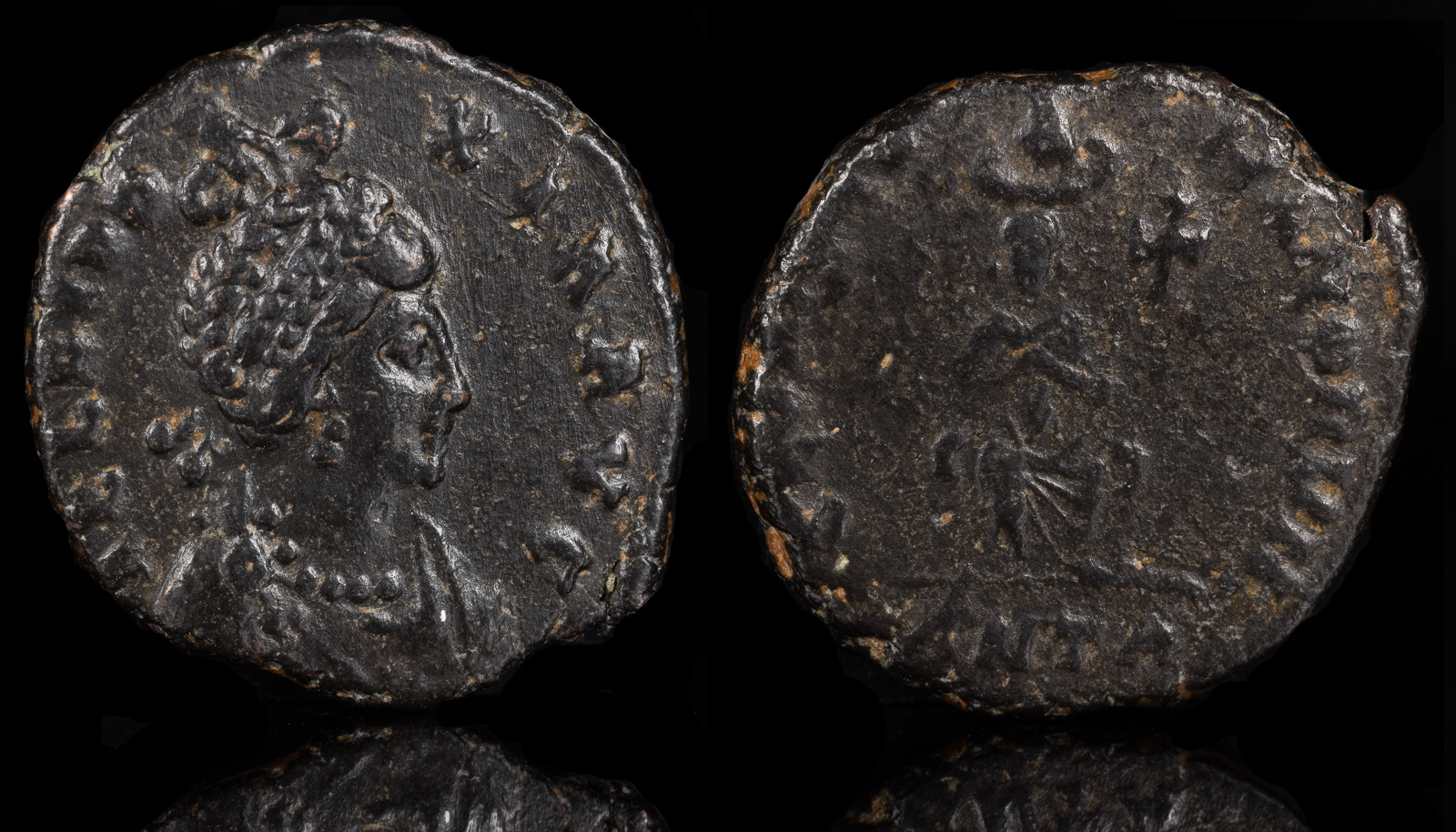Cross
View All Tags
In the earlier phases of Roman history, the cross was not a prominent symbol in Roman coinage, as the empire adhered to a polytheistic belief system. However, as Christianity began to spread within the Roman Empire, the cross started to emerge as a symbol associated with Christianity, particularly after Constantine’s famous conversion. The Edict of Milan in 313 CE, which legalized Christianity, marked a significant turning point. Constantine, the first Christian Roman emperor, adopted the Christian cross as a symbol of divine favor and protection.
The cross first appeared on Roman coins during the reign of Constantine I, specifically after his victory over Maxentius at the Battle of the Milvian Bridge in 312 CE. According to Christian tradition, Constantine saw a vision of the cross in the sky with the words “In this sign, you will conquer” (“In hoc signo vinces”). This vision influenced his decision to adopt the cross as his personal symbol, and it began to appear on coins shortly thereafter. The labarum, a military standard bearing the Christian cross, also became a prominent feature of Roman coinage during Constantine’s reign. These early coins often depicted the emperor holding a Christian labarum, signifying his role as a defender of the Christian faith.
The use of the cross continued to grow in significance during Constantine’s reign and the reigns of his successors. The cross on Roman coinage was not only a religious symbol but also a political and imperial statement, indicating the Christianization of the Roman Empire and the emperor’s role as protector of the faith. Over time, the cross became a common feature on coins, particularly those minted during the later years of the Eastern Roman Empire (Byzantine Empire), where it symbolized the imperial authority and divine right of the emperor.

Aelia Eudoxia (wife of Arcadius)
Antioch, 395-401 CE
Æ 2.44g, 17mm, 6h
AEL EVDOXIA AVG, diademed and draped bust to right, being crowned by the hand of God above
G[LORIA RO]MANORVM, empress enthroned facing, hands on breast, being crowned by the hand of God; cross in right field, ANTA in exergue.
RIC X 83; LRBC 2805